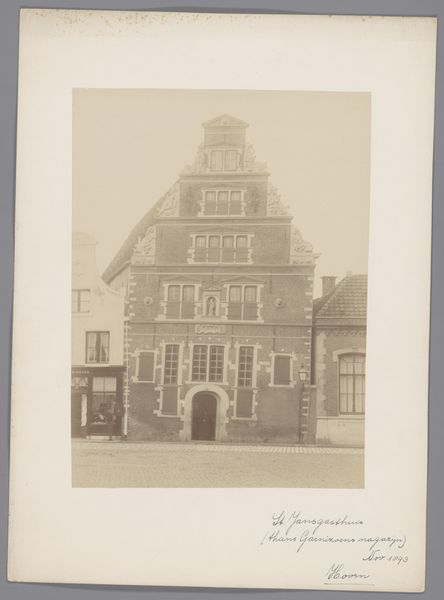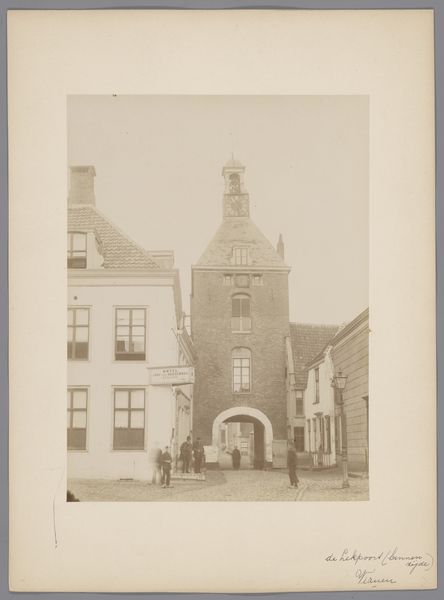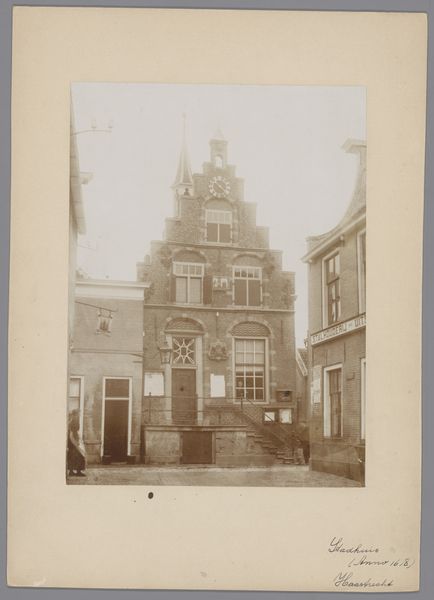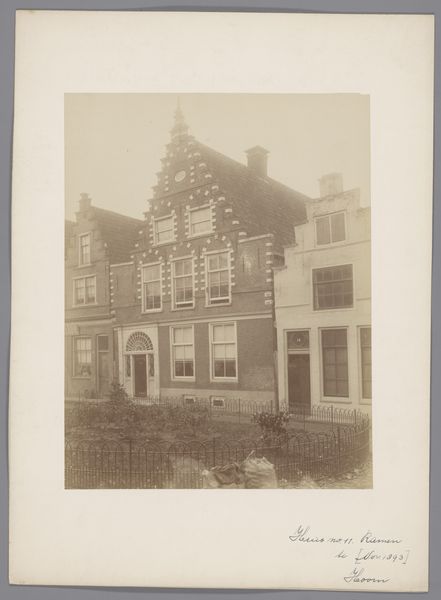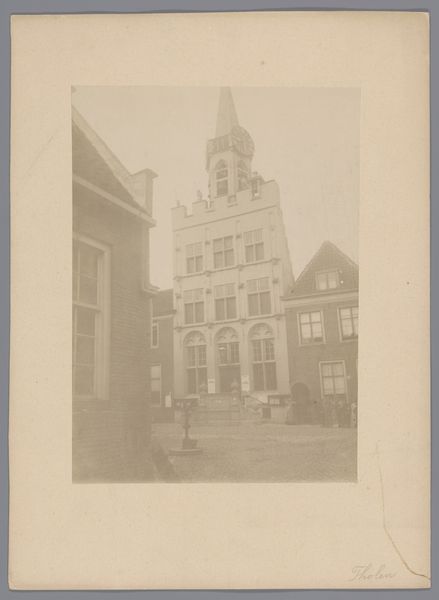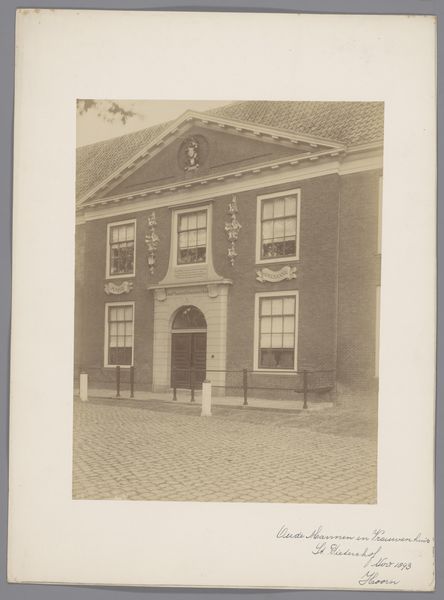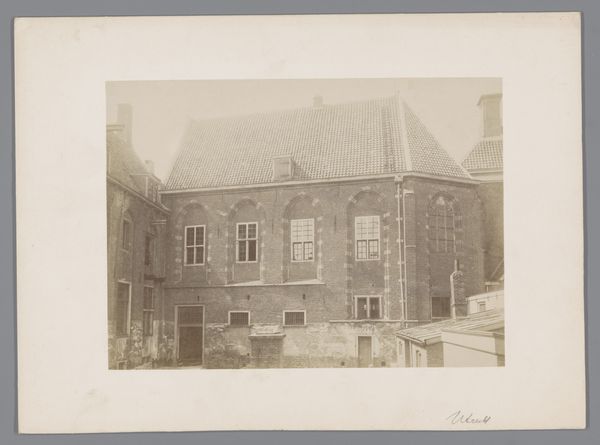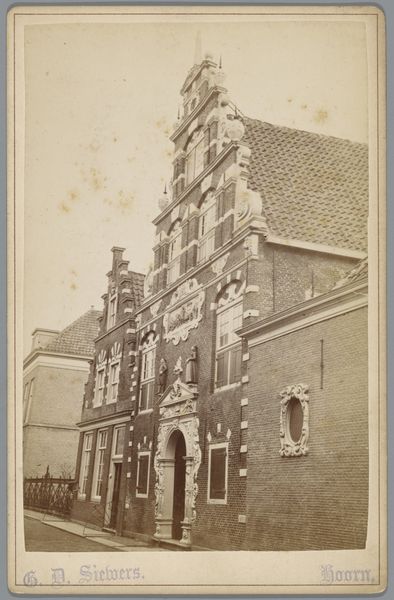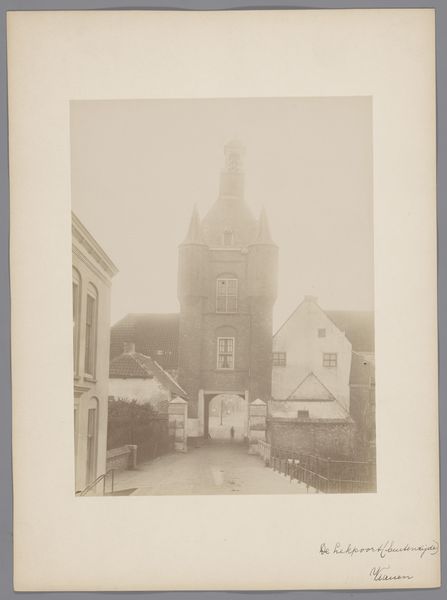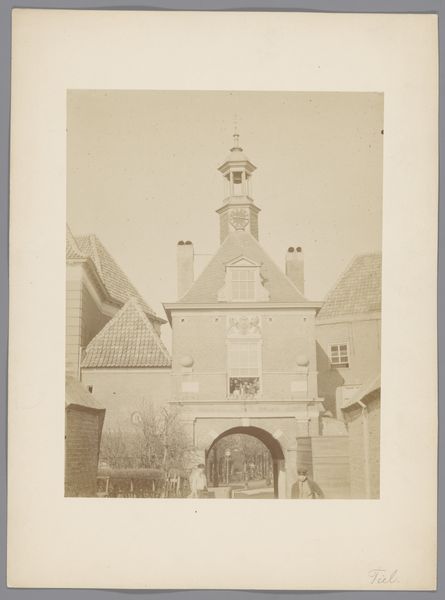
Dimensions: height 228 mm, width 175 mm
Copyright: Rijks Museum: Open Domain
Curator: Anonymously captured in 1893, this is “Gezicht op het Diaconiehuis op Achterom 3 te Hoorn”—a view of the Diaconie House on Achterom 3 in Hoorn. Editor: There's something quite austere, almost unforgiving, about the structure depicted here. The light, or perhaps the photographic process itself, lends a severe gravity to the stone and tile. Curator: It’s intriguing how architectural details – the stepped gables, the evenly spaced windows – function as secular icons of stability and civic responsibility. Note how these houses denote wealth, piety and governance through specific, historical emblems. Editor: I'm drawn to the texture. Look closely—you can almost feel the roughness of the brick and the cool smoothness of the stone trim. You start to consider what these buildings mean for labor and economics, beyond their role as places of public welfare and service. Consider how such a monumental edifice may speak volumes of class structures. Curator: That’s perceptive. While the house offers charity, its design echoes the stoicism expected of the beneficiaries and of the people administrating, a tacit reminder of hierarchy. It echoes that somberness through that imposing and monumental appearance. Editor: Thinking about its construction – the skilled masons, the quarrying of the stone, even the transportation of materials – it creates a portrait of the town’s economic and social networks at the time. Who was benefiting, in every sense, from these monumental civic works? What were conditions like in the quarries that provided all of this? Curator: Considering those details adds a needed layer of depth, yes. We see not just a benevolent facade, but a network of dependencies materialized in brick and mortar. And it begs the question how much that benevolence depended on visible status display. Editor: Right, it is essential not to shy away from critical questioning. In this view, that monument represents complex relationships around work, value, and human life, that we can almost physically sense in every part of this picture. Curator: Precisely! Thinking through architecture as a locus of shared social memory reveals how we've imbued particular visual elements with coded symbolic value over time. Editor: And examining it in its material composition gives the architecture a voice that’s deeply tied to the ground, speaking as a tangible marker of specific, located social dynamics.
Comments
No comments
Be the first to comment and join the conversation on the ultimate creative platform.

